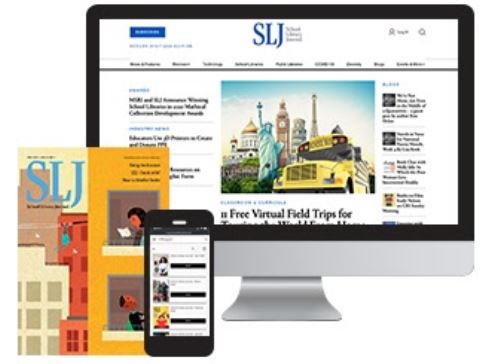2018 School Spending Survey Report
The Trouble With Teen Programming
Forget centralized programming, adapted kid activities, and advisory boards. Teen activities should be patron-driven, dynamic, and constantly in flux.
 When I meet librarians around the world and across the country, teen programming is by far the number one subject I’m asked about. The questions can be boiled down to: “Why isn’t my library’s programming working?” The first thing I recommend is that librarians check themselves for excuses. Is your first impulse to blame the teens for not buying what you are trying to sell? Librarians often say, “We don’t offer teen programming. We tried it five years ago and no one showed up.” Or, “The teens in this neighborhood are not interested.” Imagine a retailer with that attitude. In this situation, the library may simply not be providing what their community wants or needs. The second thing I suggest to librarians is that they take a hard look at their planning process—and how it contributes to the goal of cultivating strong youth participation.
When I meet librarians around the world and across the country, teen programming is by far the number one subject I’m asked about. The questions can be boiled down to: “Why isn’t my library’s programming working?” The first thing I recommend is that librarians check themselves for excuses. Is your first impulse to blame the teens for not buying what you are trying to sell? Librarians often say, “We don’t offer teen programming. We tried it five years ago and no one showed up.” Or, “The teens in this neighborhood are not interested.” Imagine a retailer with that attitude. In this situation, the library may simply not be providing what their community wants or needs. The second thing I suggest to librarians is that they take a hard look at their planning process—and how it contributes to the goal of cultivating strong youth participation. Ask yourself: why does the library program for teens anyway?
Librarians talk a lot about programming ideas, but not so much about how they are planned, or even why they’re offered. Programming should not be undertaken just for its own sake. It should fit into a broader service context. Rather than looking at event planning in terms of ideas and attendance numbers, libraries should frame the idea of young adult programming around teen participation and ownership—with the community in leadership roles, possessing decision-making power. To the greatest extent possible, teens should be in charge of developing and carrying out activities for themselves and their peers.The pitfalls of centralized program development
This participatory model is at odds with the centralized programming development model used by some systems. Centralized programming most often refers to a system in which, as the name implies, ideas are developed by one group for implementation at multiple library branch locations by local staff or librarians/paraprofessionals who visit a branch. On the surface, centralized programming may appear to have benefits. Systems using this model declare that it is more efficient, requiring less staff time for the development and delivery of activities. This may be true in general. But when used with teen activities, it may eliminate any opportunity for their participation, decision-making, and leadership. This model treats all members of the teen community the same way, while in reality, young adults in different neighborhoods may have vastly different needs and interests. Centralized program planning can focus on idea generation without serving broader goals, and may be unresponsive to the spontaneously evolving pursuits and interests of youth. Library systems with centralized planning may find that teen programming is difficult to establish and sustain. This failure of planning can be wrongly interpreted as lack of interest. Teen programming isn’t storytime, with the librarian acting as creator/presenter and patrons in the role of receiver/audience. It can’t be implemented in the same way as activities for younger children and tweens. Let’s remove the phrase “Teen Advisory Board” from our service vocabulary. Asking youth to offer advice is passive. Librarians with teen advisory groups lament, “Even when I produce programming the Teen Advisory Board specifically asks for, no one shows up.” But if young adults are in charge, their peers will always be there.What you can do today; HYBRID PLANNING
Involving teens in planning assures that programming is relevant and appropriate in a given community. The group that turns up after school to play Yu-Gi-Oh is a prime example. These young adults share an interest at a particular time at a particular location. This presents a prime opportunity to ask teens to become leaders and run a library program based on what they like to do. This approach (in the tradition of Tom Sawyer getting someone else to paint the fence) also takes the pressure off of staff—and places the librarian in the role of facilitator rather than creator. The best of both worlds is a hybrid in which local branch staff can work with youth to decide which activities might be interesting, with a main library acting as a flagship for resources. In practice, hybrid planning can be as simple as asking teens to choose what will happen today…or to decide what will happen next week based on the programming menu. This low-level participation, essentially selecting from a menu, is a basic step toward teens developing their own concepts.reach out to high schools; ENGAGE 'REGULARS'
Planning programs with the library should earn teens volunteer service hours. Make an appointment with the guidance counselor at the local high school and tell them that the library is an outstanding setting for their students to earn community service hours. Can you set up a table at the school during lunch? Does the school have a volunteer fair? Offer the library as a venue for extracurricular activities such as the debate team or math club. Suggest using your space to display student art, poetry, and science fair projects. Talk to the teen standing in front of you at the service desk. Engage teen ‘regulars.’ What do they like to do? If three kids sit down and begin to play Magik, Risk, or something else, ask them if they’d like to lead a group activity in that game. When you spot someone playing chess, ask if she’d run a chess night. If a teen shows you his drawings, ask him if he will run an art evening. Offer to get the supplies if he will make a flier and arrange for some of his friends to come. Display the art to help mark teen territory. Are teens playing Minecraft on their personal laptops or watching silly cat YouTube videos? Make the reading room available for them. That is the beginning of a program—and a leadership group. OK. If you’ve managed to find a reason why each one of those things would be impossible, I implore you to (once again) check yourself. There are teens in your community who are hungry for responsibility and willing to develop activities for themselves and their peers. It’s your job to engage the youth in your community—and to begin the process of participation. Jennifer Velasquez (@jenVLSQZ) is a lecturer at the San José State University School of Information (CA) and coordinator of teen services for the San Antonio Public Library. A 2011 Library Journal Mover & Shaker, she is the recipient of the New York Times Librarian Award (2005). ALA Editions will publish her book on teen library services in 2015 (if she ever finishes her revisions).RELATED
RECOMMENDED
CAREERS
The job outlook in 2030: Librarians will be in demand
CAREERS
The job outlook in 2030: Librarians will be in demand
ALREADY A SUBSCRIBER? LOG IN
We are currently offering this content for free. Sign up now to activate your personal profile, where you can save articles for future viewing






Add Comment :-
Comment Policy:
Comment should not be empty !!!
Shannon
Teens at my library are not allowed to volunteer. The county does not allow anyone under the age of 18 to volunteer because background checks are required for all volunteers, and the state does not allow background checks to be performed on minors (or something like that). How do I allow teens more interactive ownership if they cannot run programs, etc.? I solicit teen advice on YA programs, etc. and I get great attendance at events and they really love the library. We are a block away from the local high school, so every afternoon around 40 kids come into the library. We offer programming to keep them busy after school and let them unwind for a bit. We have a great collection with high circ stats and I'm going to be doing more crafts in the future. I only just graduated with my MLS and got my first professional job in August, so I could use some advice and tips on how to serve my teens better--or if what I'm doing now is all right. I've read lots of library literature on teen services, but am stuck on how to implement some of it in my own library with the volunteer situation. Thanks in advance for any advice/conversation!Posted : Oct 29, 2014 06:41
Polly
The tone of this article is really patronizing. I do not find the idea of engaging teen regulars impossible. I find it a Library 2.0 idea from 10 years ago, and I'm sure we've moved on to library 3.0 or whatever the next thing is called. We are moving towards a future of STEM, connected learning, tech programming, that will be delivered outside of traditional library spaces in order to engage teens who are not already library users. We have not moved beyond the presenter/audience program, we're just past librarians and libraries having the skills and equipment to make those presentations. To provide the kind of high quality, exciting learning programs that teens will come to, we need to allocate sizeable budgets to hire presenters with expertise, create lab-like environments where every program is hands on, and come up with curriculums that lead to real, marketable skills. Please look at Detroit HYPE, Tacoma Story Lab, city of Los Angeles Summer of Learning if you want to look to the future. If you want to call your programs successful because you've rounded up your Minecraft regulars and given them a dedicated space and time to play, your expectations are WAY too low, and your programming goals are superficial. I know, because I was there with my Runescape Club in 2006. Now my teen programs have teens coding their own game apps, and I haven't had any problems filling these programs to capacity. I do agree we need to ditch the word advisory. Many advisory groups are doing much more than passively giving advice. In many places teens are planning and animating high quality programming that draws crowds because the advisors act as their own promotional army. The word advisor barely scrapes the surface of what they do, and that is because teen librarians have empowered them not only to think, but to deliver.Posted : Oct 21, 2014 05:27